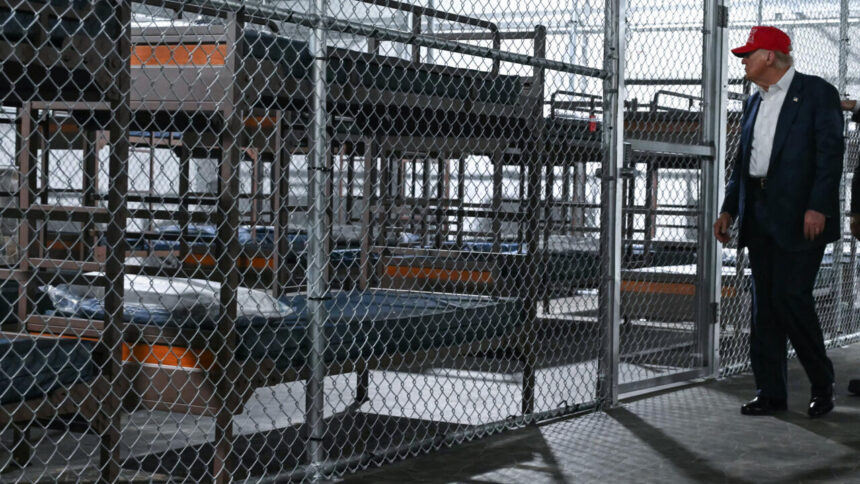Trump Tours ‘Alligator Alcatraz’ Migrant Detention Facility
In a significant move towards his administration’s immigration enforcement efforts, President Donald Trump visited a newly established detention facility in the Florida Everglades, which has been informally dubbed “Alligator Alcatraz”. This site is slated to accommodate around 3,000 migrants as part of the ongoing crackdown on illegal immigration.
During his visit to the facility, Trump remarked that it would soon be a holding ground for some of the “most menacing migrants, some of the most vicious people on the planet”. He noted that the natural barriers formed by local wildlife, including alligators, crocodiles, and pythons, would likely deter any escape attempts by detainees.
Controversy Surrounding the Facility
The construction of this facility has raised concerns among state lawmakers, environmental organizations, and local residents who fear its impact on the vital ecosystem of the Everglades. Betty Osceola, a member of the Miccosukee Tribe, voiced her apprehensions about potential environmental damage as she stood near a canal where an alligator was observed swimming.
Critics argue that the facility threatens efforts to restore the Everglades, which has seen billions of dollars invested in the rehabilitation of its diverse habitats. Activists like Elise Pautler Bennett from the Center for Biological Diversity expressed concern over the expedited approval processes that could bypass essential environmental considerations typically required for developments in such a sensitive area.
Operational Insights and Future Plans
The facility is designed with a capacity for 3,000 detainees, with the first group expected to arrive shortly. Trump indicated that plans are also underway for an additional center near Jacksonville, which will house another 2,000 migrants. Spearheading this initiative alongside Trump was Florida’s Governor Ron DeSantis, who plans to empower members of the state’s National Guard as immigration judges to facilitate swift deportation processes.
The administration suggests that the new facility could set a precedent for future detention centers, aligning with broader objectives to manage immigration at the state level. Department of Homeland Security Secretary Kristi Noem noted that the facility allows for due process, enabling migrants to have hearings before being repatriated to their home countries. Both Trump and Noem are optimistic that this initiative could lead to self-deportation among undocumented migrants, with Noem estimating that around one million may have already left without formal tracking.
Financial Aspects of the Facility
The operational costs for the Alligator Alcatraz facility are projected to reach approximately $450 million annually. Funding will primarily derive from a temporary shelter and services program previously utilized by FEMA for accommodating undocumented immigrants in various US cities.
Current State of Immigration Detention
As ICE faces a record-high population of 59,000 detainees – significantly exceeding its capacity – the advent of this facility comes at a critical juncture in the national discourse surrounding immigration enforcement policies. The location of the center, situated 36 miles from Miami at the Dade-Collier Training and Transition Airport, replicates the isolation characteristic of the former prison Alcatraz.
Table: Key Information About ‘Alligator Alcatraz’
| Feature | Details |
|---|---|
| Capacity | 3,000 detainees |
| Annual Cost | $450 million |
| Location | Dade-Collier Training and Transition Airport, Florida |
| Expected Detainee Arrival | As soon as Wednesday |
The unveiling of this detention center is emblematic of the administration’s aggressive stance on immigration and its ramifications for the local community and ecosystems will likely unfold in the months to come.




